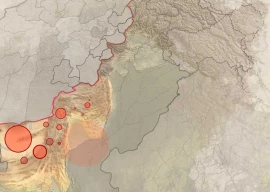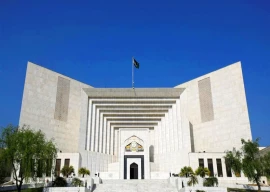
Now we all know that the issue of restoration has been settled, not just through an executive order, but judicially too by the July 31, 2009 verdict of a 14-member bench.
One would have thought a judge hearing this “story” on the idiot-box would shrug it off as poor journalism. Instead, 17 honourable judges went into an emergency huddle in the evening at the end of which they issued a rather long press release to inform the government that it had been outed and if it did what it was rumoured to, the court would not just walk into the night. It would bludgeon the government with the hammer of Article 6, no less, thank you!
The entertainment value of this slapstick aside, why would a rumour get the honourable judges to clutch this way? By their own account they are doing everything right, relying on pure legalities and the constitution and being totally apolitical. Is it possible that they thought – and this says nothing about the rumour itself to which we shall come in a moment – the government might have some reason, strong enough, to do the Kamikaze on them? Is there politics here, perchance?
An important question this because it should be evident that even for this government, not the brightest this side of the Raj, to contemplate packing off the judges through de-notification would not just be stupidity at an epic scale but an utterly useless course of action.
Because, lest we forget, even if it were to do so, the gods having made it mad, what would it get out of it? Of the 17 judges, there are only three, the Chief Justice included, who belong to the category that was sacked by the November 3 emergency and stood restored by the executive order. Four, if you count in Justice Ramday. What about the remaining 14 or 13? Corollary: even this bunch cannot shoot itself in the foot and then put that injured foot in its mouth.
So, why did the judges raise Cain? The Chief Justice of Pakistan is even reported to have said that he knew the story was right. Really? Now, how would the CJP know that, especially if it is to be believed that the perfidy is that of the government? Or could it be that the same source that tipped off the reporters also whispered in the CJP’s ear.
But what about the editors at the channels that ran this story? They would have, one assumes, got the reporters reporting this story to tell them how, and whether, this was news. It would boggle the mind of anyone who has been a journalist for any decent length of time to believe that one or two or three reporters ran away with a rumour as credible story. Worse, that their editors would allow them to run the rumour as news without the process that separates the grain from the chaff.
Even more surprising is the decision by the court to form a 17-member bench to look into this purported plan by the government and summon the attorney-general of Pakistan. Why should the government be put through the wringer when it has denied knowledge of any such plan? Is the court saying to the government you are guilty until you prove yourself innocent?
The court has now decided to call in the editors also. Perhaps it should ask them how they knew this story was right and why they would deem fit, if it was a rumour, to run it as news. But really, if, as reported, the CJP does know, somehow, that the story is right, why be circuitous. Let’s put out the evidence for all to see.
And if it’s credible, let’s all get together to lynch these clowns.
Too many questions here. Those pertaining to the institutional fencing we keep asking. There is need now to start questioning media ethics too, starting with the basics: what constitutes a story? And yes, why would the honourable judges jump up when a shadow says boo!
Published in The Express Tribune, October 18th, 2010.










1728386780-0/BeFunky-collage-(38)1728386780-0-270x192.webp)

COMMENTS
Comments are moderated and generally will be posted if they are on-topic and not abusive.
For more information, please see our Comments FAQ